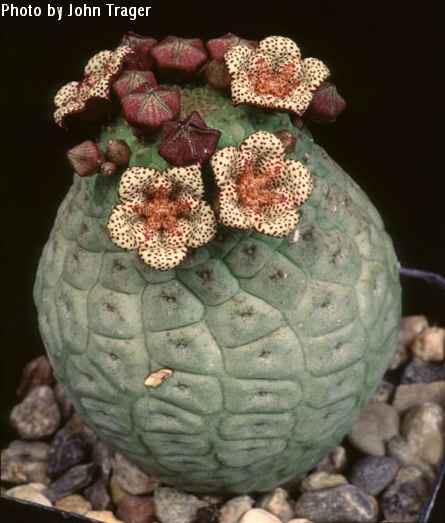Perhaps best known as one of the smooth-stemmed members of Trichocaulon, the spiny stemmed species were combined with Hoodia, leaving the former in need of a new generic home. The new genus Leachia was rendered invalid as it had already been applied to a genus in the Asteraceae. Realizing his error, Plowes chose a new name Leachiella. Despite having checked as to the availability of that name no one realized until after publication that it had been used before for a genus of red algae. The final solution was to coin the slightly more cumbersome but more specifically commemorative name Larryleachia, now the preferred designation among botanists today. Reminiscent of Pseudolithos, it has slightly different demands for successful cultivation. Though native to winter rainfall areas it grows in very dry deserts, typically among quartz rubble with superb drainage. Most of the year our plants grow in a shade house that provides essential ventilation and bright light to keep the plants compact and with a healthful blush of color. They are moved into the greenhouse for protection from rain and associated cold only after the first rains, usually in December, and after night temperatures drop below 50° F. They are given only a light splash or two a month during their winter stint inside. They are moved out again to the shade house after the rainy season has ebbed, normally March or April at the latest. HBG 89168, plants grown from seed, apparently from prior pollination in the field, from plants received from the USFWS after having been confiscated for illegal collection and importation. All that is known of their origin is that they were collected in Aug. 2000 somewhere in the N Cape of S. Africa. $8.50.

Published in the Cactus and Succulent Journal, Vol. 75 (2), March - April, 2003